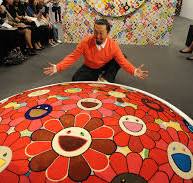The Power of Artistic Collaborations
Artistic collaborations have long been a driving force in the world of creativity, bringing together diverse talents and perspectives to create something truly unique. Whether it’s a fusion of different art forms, a partnership between artists from different backgrounds, or a joint project between artists and other creative professionals, collaborations have the power to inspire, challenge, and transform.
Breaking Boundaries
One of the most significant aspects of artistic collaborations is their ability to break boundaries and push the limits of traditional artistic expression. When artists come together to work on a project, they bring their individual skills, experiences, and ideas to the table, resulting in a fusion of creativity that can lead to groundbreaking innovations.
Cross-Pollination of Ideas
Collaborations also facilitate the cross-pollination of ideas, allowing artists to learn from each other and expand their creative horizons. By working with others who have different perspectives and approaches to art, artists can gain new insights, techniques, and inspirations that they may not have encountered on their own.
Building Connections
Artistic collaborations are not only about creating art; they are also about building connections and fostering relationships within the creative community. Through collaboration, artists can form lasting bonds with their peers, mentors, and audiences, leading to a sense of camaraderie and mutual support that enhances their artistic journey.
Celebrating Diversity
By bringing together artists from diverse backgrounds and cultures, collaborations celebrate the richness and diversity of the artistic landscape. These partnerships enable artists to explore new themes, styles, and narratives that reflect the complexity and beauty of our interconnected world.
The Future of Collaboration
As technology continues to advance and the global art community becomes more interconnected, the possibilities for artistic collaborations are endless. From virtual collaborations that transcend geographical boundaries to interdisciplinary projects that merge art with science, music, or technology, the future holds exciting opportunities for artists to collaborate in innovative ways.
In conclusion, artistic collaborations are a testament to the transformative power of creativity when individuals come together in pursuit of a shared vision. By embracing collaboration as a catalyst for innovation and connection, artists can continue to push boundaries, inspire change, and shape the future of art for generations to come.
Effective Strategies for Successful Artistic Collaborations: 5 Essential Tips
- Clearly define roles and responsibilities for each collaborator.
- Communicate openly and regularly to ensure everyone is on the same page.
- Respect each other’s ideas, opinions, and creative input.
- Be open to compromise and finding solutions that work for all parties involved.
- Celebrate successes together and learn from challenges as a team.
Clearly define roles and responsibilities for each collaborator.
In the realm of artistic collaborations, it is essential to clearly define roles and responsibilities for each collaborator involved in a project. By establishing clear expectations and delineating specific tasks for each individual, collaborators can work harmoniously towards a common goal without confusion or overlap. This clarity not only streamlines the creative process but also ensures that each artist’s unique skills and contributions are maximized, leading to a more cohesive and successful outcome. Setting clear roles and responsibilities fosters accountability, encourages effective communication, and ultimately enhances the overall collaborative experience for everyone involved.
Communicate openly and regularly to ensure everyone is on the same page.
Effective communication is key in artistic collaborations to ensure that all participants are aligned and working towards a common goal. By communicating openly and regularly, artists can share ideas, provide feedback, address any concerns, and clarify expectations. This transparent communication helps to foster a collaborative environment where everyone feels heard and valued, leading to a more cohesive and successful creative outcome.
Respect each other’s ideas, opinions, and creative input.
Respecting each other’s ideas, opinions, and creative input is essential in artistic collaborations. By valuing and acknowledging the diverse perspectives and contributions of all collaborators, a sense of mutual trust and appreciation is fostered. This respectful environment allows for open communication, constructive feedback, and the cultivation of a collective vision that transcends individual creativity. Embracing each other’s ideas not only enriches the collaborative process but also leads to innovative outcomes that reflect the collective strength of the team.
Be open to compromise and finding solutions that work for all parties involved.
In the realm of artistic collaborations, being open to compromise and finding solutions that benefit all parties involved is essential for fostering a harmonious and productive creative process. By maintaining a flexible and collaborative mindset, artists can navigate differences in opinions, styles, and approaches to create a cohesive and unified artistic vision. Embracing compromise not only encourages mutual respect and understanding among collaborators but also paves the way for innovative solutions that blend the strengths of each individual contributor. Ultimately, by prioritizing cooperation and finding common ground, artists can elevate their collaborative projects to new heights of creativity and success.
Celebrate successes together and learn from challenges as a team.
When engaging in artistic collaborations, it is essential to celebrate successes together and learn from challenges as a team. By acknowledging and appreciating the achievements achieved collectively, collaborators can strengthen their bond and motivation to continue working towards shared goals. Likewise, facing challenges as a team provides an opportunity for growth, problem-solving, and resilience. Embracing both successes and obstacles as a unified group fosters a supportive and collaborative environment that nurtures creativity and innovation in the artistic process.



